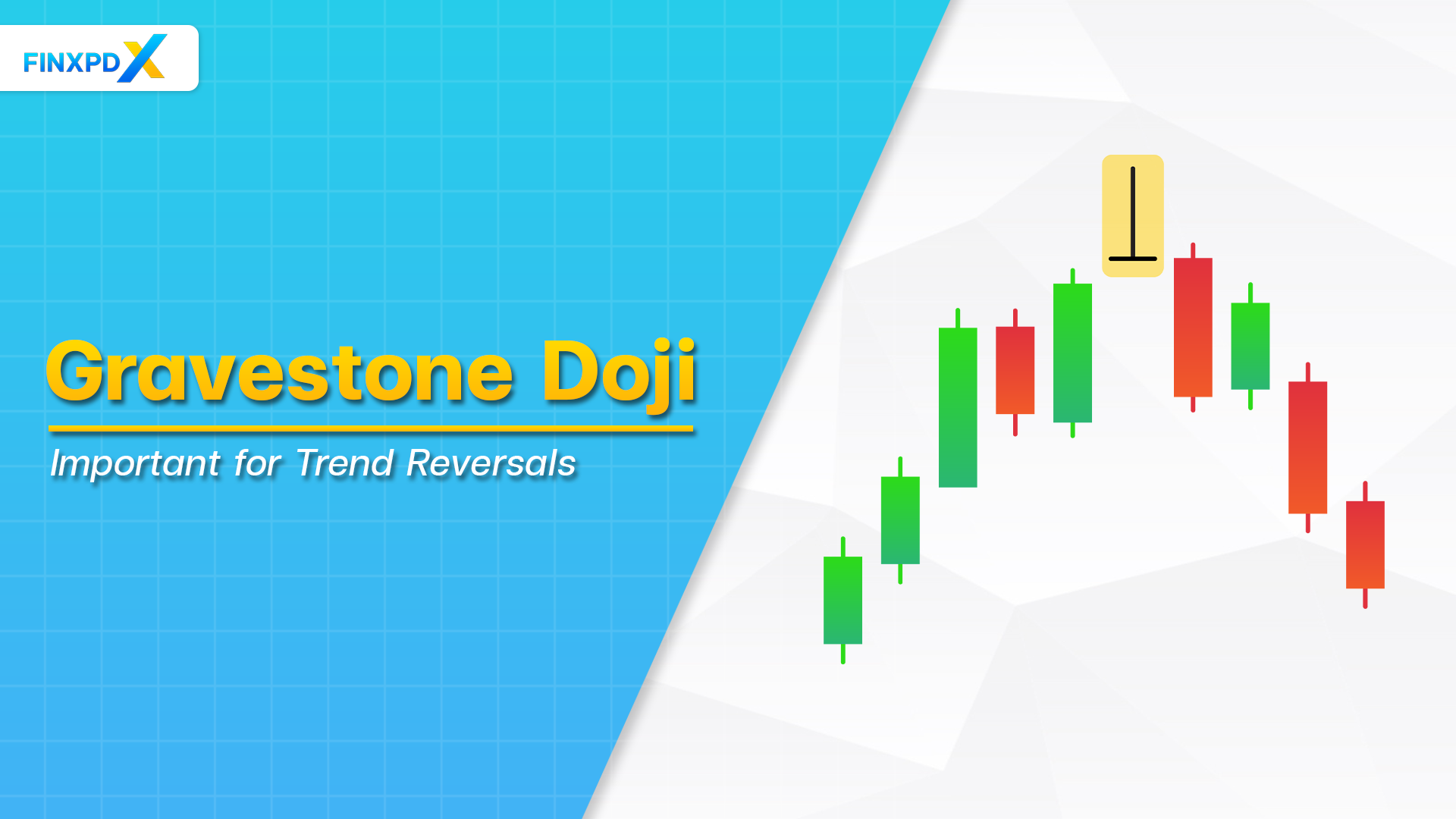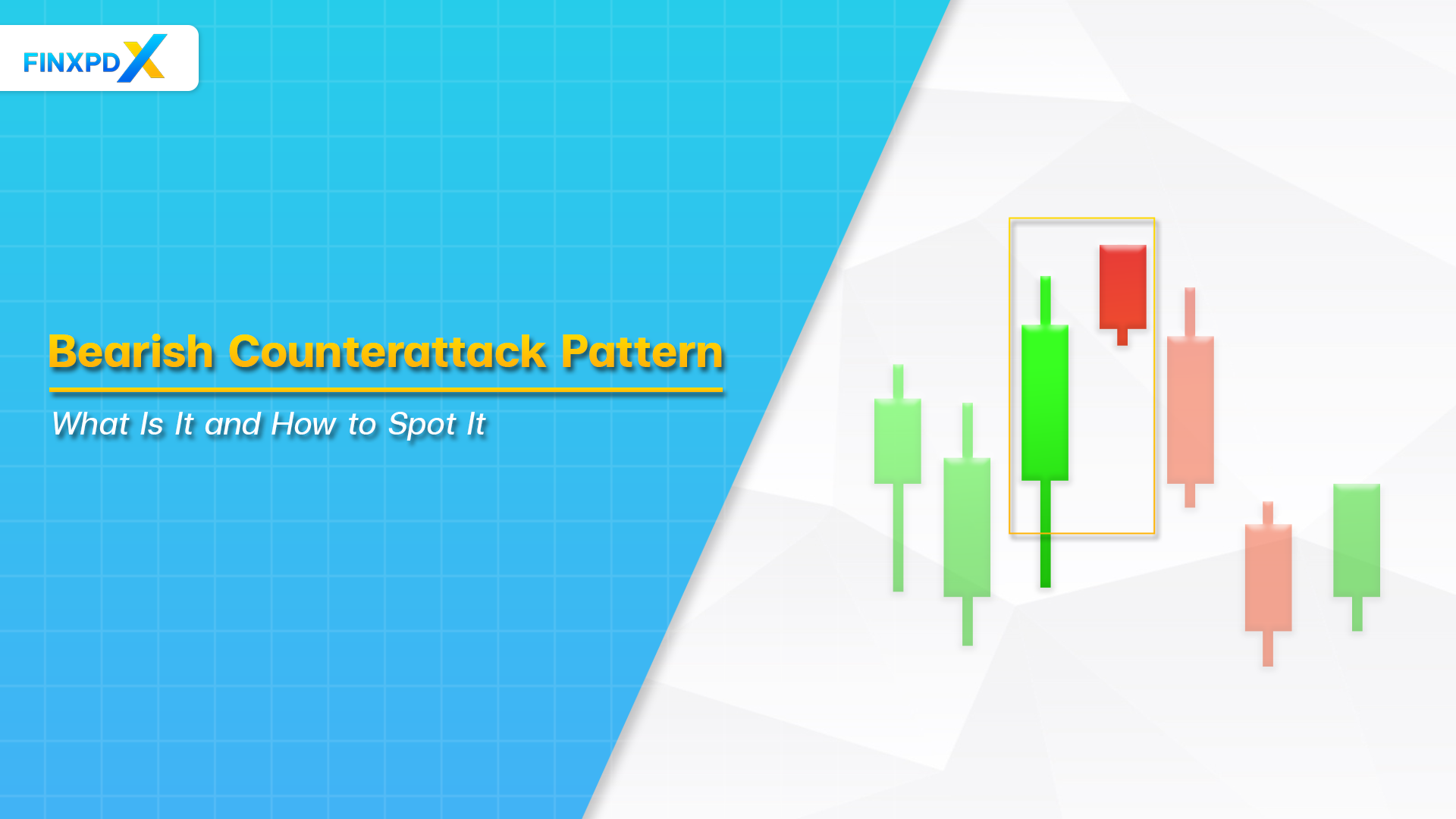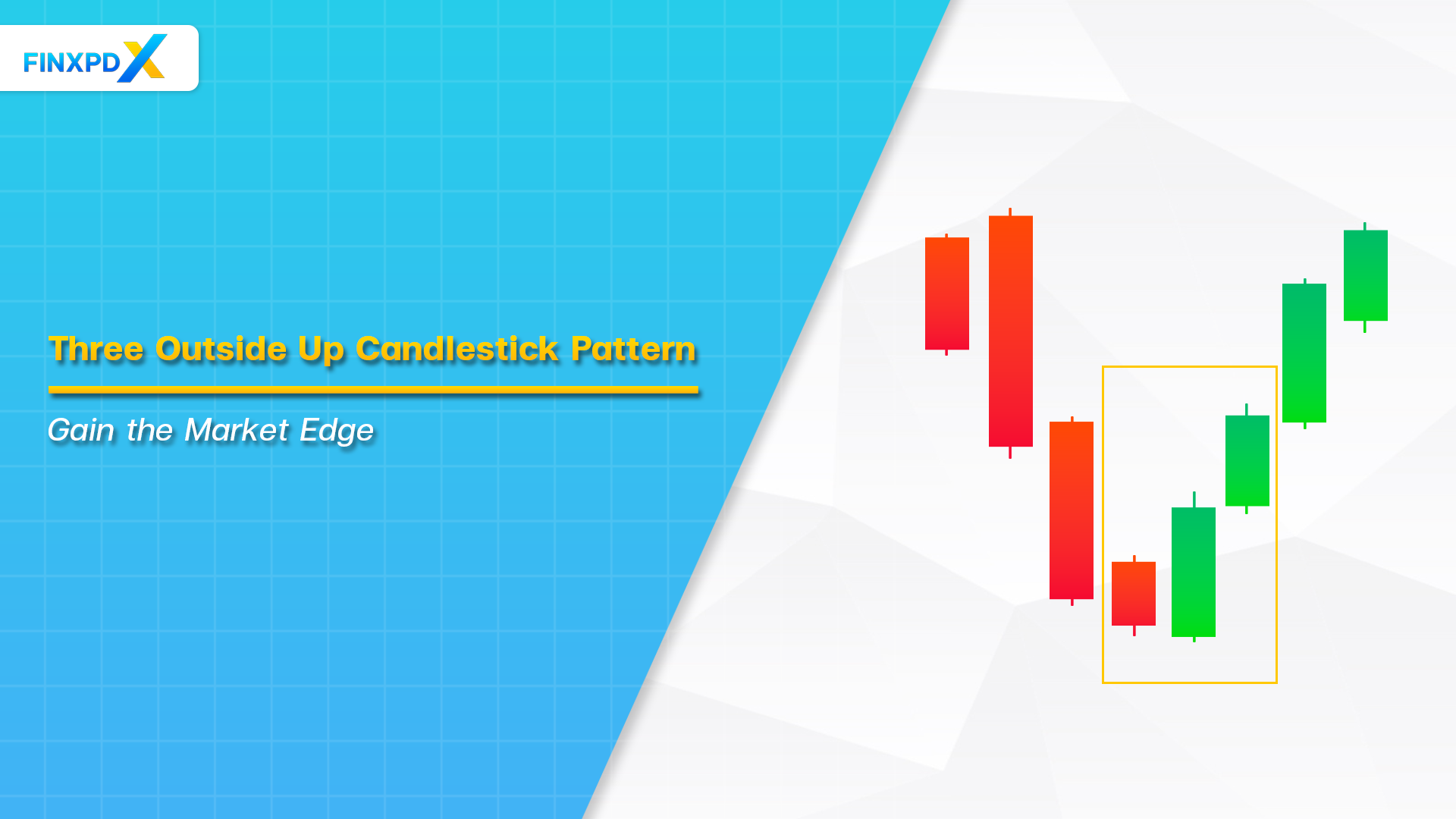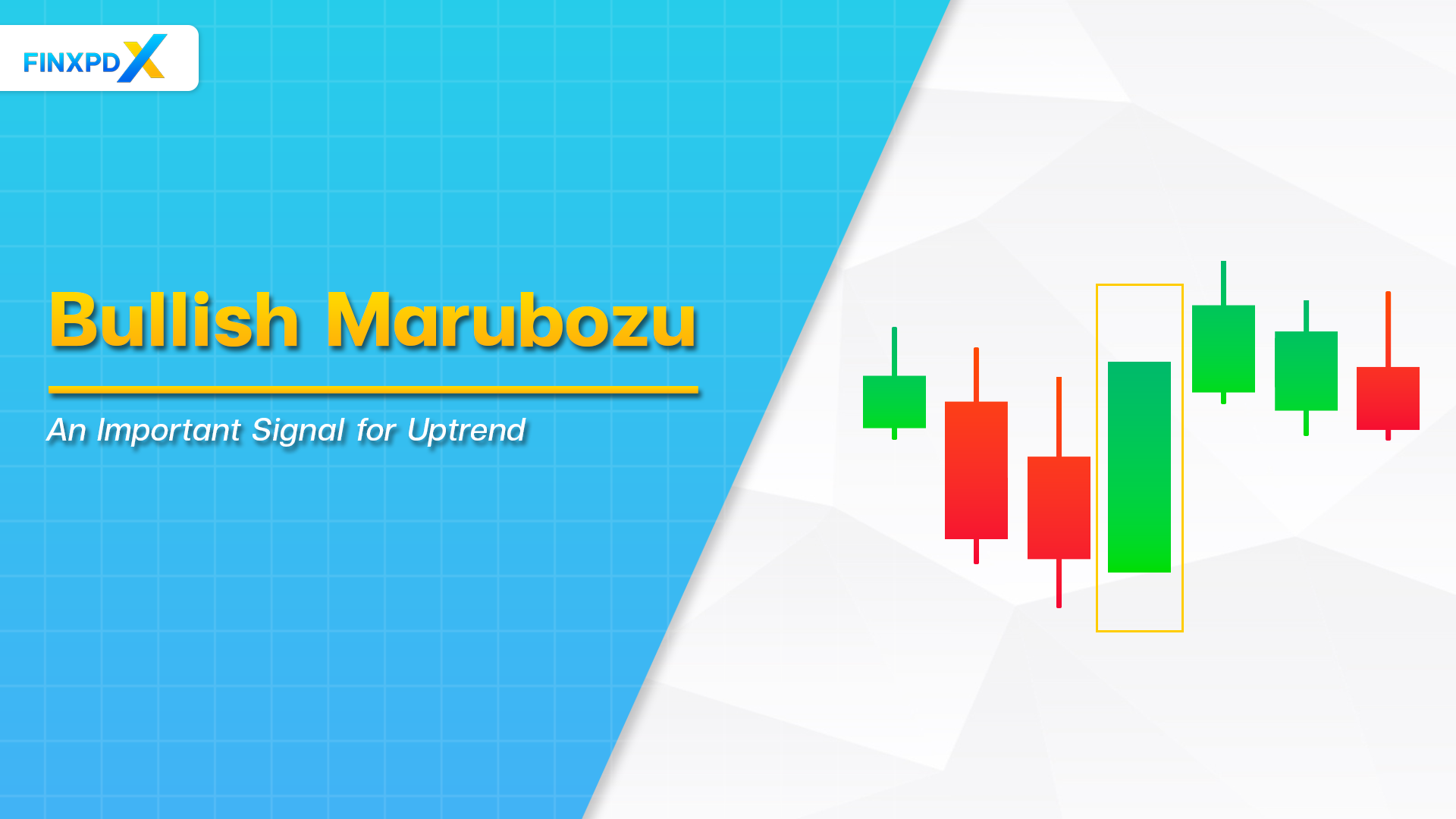The world of technical analysis in trading is filled with numerous patterns and indicators, each serving its unique purpose in predicting market movements. One of the useful tools in trending analysis is candlesticks, which have various patterns. The Doji candlestick pattern is a significant candlestick pattern for identifying potential trend reversals. One of the Doji types is the Gravestone Doji pattern characterized by its distinct shape and formation. It is often seen as a signal of bearish trends.
In this article, we will delve into the Gravestone Doji, how to identify it, its limitations, and why it is essential for anticipating trend reversals. Understanding this candlestick pattern is important for traders making informed decisions in volatile markets.
What Is Gravestone Doji?
The Gravestone Doji is a unique candlestick pattern used in technical analysis to signal potential trend reversals. It appears when the open, low, and close prices are nearly the same, while the high price is significantly higher, forming a shape that resembles a gravestone. This formation indicates that the bulls were able to push prices higher during the trading session, but the bears eventually pulled the prices back down to the opening level by the end of the session. This pattern often signifies a bearish reversal when it appears at the end of an uptrend.
Key Takeaways
- Gravestone Doji is a candlestick pattern signaling potential trend reversals.
- Gravestone Doji pattern often appears at market tops, suggesting bearish reversals.
- Gravestone Doji is essential in technical analysis to identify market turning points.
- Gravestone Doji indicates buyers pushed prices up, but sellers regained control.
- Gravestone Doji forms when the open, low, and close prices are near each other, with a long upper shadow.
How Is a Gravestone Doji Candlestick Formed?
Specific market conditions form a Gravestone Doji candlestick, reflecting a battle between buyers and sellers during a trading session. Understanding its formation process is essential for correctly interpreting this pattern.
Formation Process
The Gravestone Doji candlestick forms when the trading session begins with a relatively low opening price. Following this, bullish traders push the price significantly higher, resulting in a long upper shadow. This indicates strong buying pressure. The high price of the session is substantially above the opening price, showing bullish control. However, bearish traders push the price back down as the session progresses, reversing the gains. By the end of the session, the price drops back to the opening level, resulting in a closing price nearly identical to the opening price. The low price remains the same as the opening and closing prices, resulting in little to no lower shadow.
Visual Representation
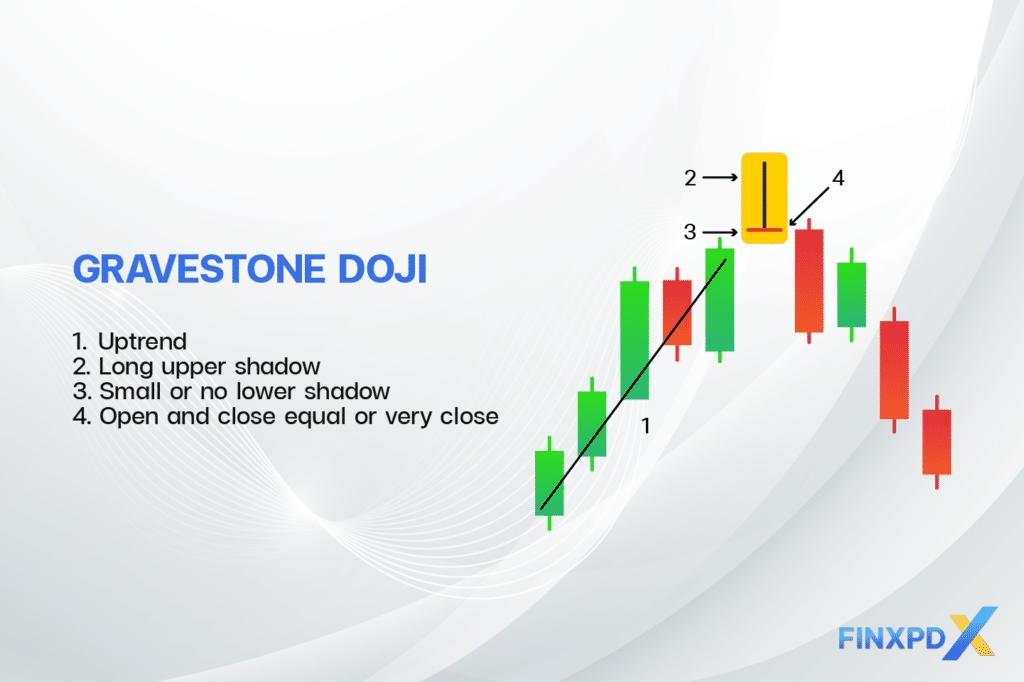
The Gravestone Doji candlestick shaped as a cross or an inverted ‘T’, and its key features are following:
- Open Low and Close Prices: These should be almost equal or very close to each other.
- Long Upper Shadow: The high price is substantially above the open, low, and close prices, creating a long upper shadow.
- No Lower Shadow: There is little to no lower shadow in this pattern.
Typical Locations
Gravestone Dojis are most significant when they appear at the end of an uptrend, where they can signal a coming bearish reversal. Their existence in other parts of a trend can also indicate potential reversals but with less reliability.
What Does Gravestone Doji Indicate?
Understanding this candlestick pattern is crucial for traders looking to predict market reversals. In this section, we will explore its implications in greater detail.
Bearish Reversal Signal
The most significant implication of a Gravestone Doji is a bearish reversal signal. When this candlestick appears at the end of an uptrend, it suggests that the upward momentum is losing steam and sellers are starting to take control. This shift from bullish to bearish sentiment can be a precursor to a downward price movement.
Market Sentiment Shift
- Buying Pressure Exhaustion: The long upper shadow of the Gravestone Doji indicates that buyers pushed prices higher during the session. However, the inability to maintain these higher prices shows that buying pressure is weakening.
- Seller Dominance: The close at or near the session’s low suggests that sellers have taken over by the end of the session, overpowering the earlier bullish attempts. This dominance of sellers strongly indicates that a price reverse soon.
⚠️Tip: Traders should seek confirmation from subsequent candlesticks or other technical indicators to validate the bearish reversal signal.
Limitations and Risk of Gravestone Doji
The Gravestone Doji, while useful, has several limitations and risks:
- False Signals: In volatile or consolidating markets, it may present incorrect reversal signs.
- Need for Confirmation: Always confirm with subsequent candlesticks or technical indicators to avoid premature decisions.
- Volume Dependency: Less significant if formed on low trading volume, indicating weak market sentiment.
- Timeframe Sensitivity: More reliable on higher timeframes (daily/weekly); less so on shorter timeframes due to noise.
- External Influences: Market news and geopolitical events can impact its reliability.
Gravestone Doji vs Dragonfly Doji Candlestick
This table will highlight the key differences and similarities between the Gravestone Doji and Dragonfly Doji candlestick patterns, helping traders understand their implications and use them effectively in trading strategies.
| Aspect | Gravestone Doji | Dragonfly Doji |
|---|---|---|
| Formation | Open, low, and close nearly the same; long upper shadow | Open, high, and close nearly the same; long lower shadow |
| Indication | Bearish reversal after an uptrend | Bullish reversal after a downtrend |
| Market Sentiment | Buyers push prices up, sellers regain control | Sellers push prices down, buyers regain control |
| Shadow | Long upper shadow, no lower shadow | Long lower shadow, no upper shadow |
| Position in Trend | Top of an uptrend | Bottom of a downtrend |
| Reliability | More reliable with high volume and confirmation | More reliable with high volume and confirmation |
| Visual |  |  |
Conclusion
The Gravestone Doji is a key candlestick pattern signaling potential bearish reversals. It forms when the open, low, and close prices are nearly the same with a long upper shadow, indicating buyers pushed prices up, but sellers regained control. This pattern is most significant at the top of an uptrend, suggesting the end of bullish momentum. However, it should not be used alone. Confirmation from subsequent candlesticks or other indicators is essential to avoid false signals, especially in volatile markets. Higher trading volumes and longer timeframes increase its reliability. You can read about the 35 candlestick patterns on our website if you’re interested in learning about the other types.
Click the button below to download the PDF
FAQs
A Gravestone Doji is a bearish candlestick pattern that forms when the open, low, and close prices are at or near the same level, with a long upper shadow. It indicates that buying pressure was overcome by selling pressure, leading to a potential reversal.
Yes, a Gravestone Doji can appear in any market, including stocks, forex, commodities, and cryptocurrencies. It is a versatile candlestick pattern used by traders across different asset classes to predict potential trend reversals.
Traders use the Gravestone Doji as a signal for a potential bearish reversal. They often look for this pattern at the top of an uptrend. Additionally, they may confirm the signal with other technical indicators or patterns before making trading decisions.
The psychology behind the Gravestone Doji reflects a shift from bullish to bearish sentiment. In particular, it shows that buyers initially drove prices higher. Nevertheless, sellers eventually gained control, pushing prices back down to the open level. As a result, this indicates potential weakness in the market.
Both the Gravestone Doji and the shooting star candlestick are bearish reversal patterns. The Gravestone Doji has an open, low, and close at the same level, while the Shooting Star has a small real body near the session’s low. The Gravestone Doji is generally considered more significant.
Related Articles:
- 35 Powerful Candlestick Patterns PDF Download
- Spinning Top Candlestick: Master It for Better Trades
- What Is Bullish Candlestick Patterns & How To Use It?
- Hanging Man Candlestick: A Complete Guide for Traders
Read more: Forex

